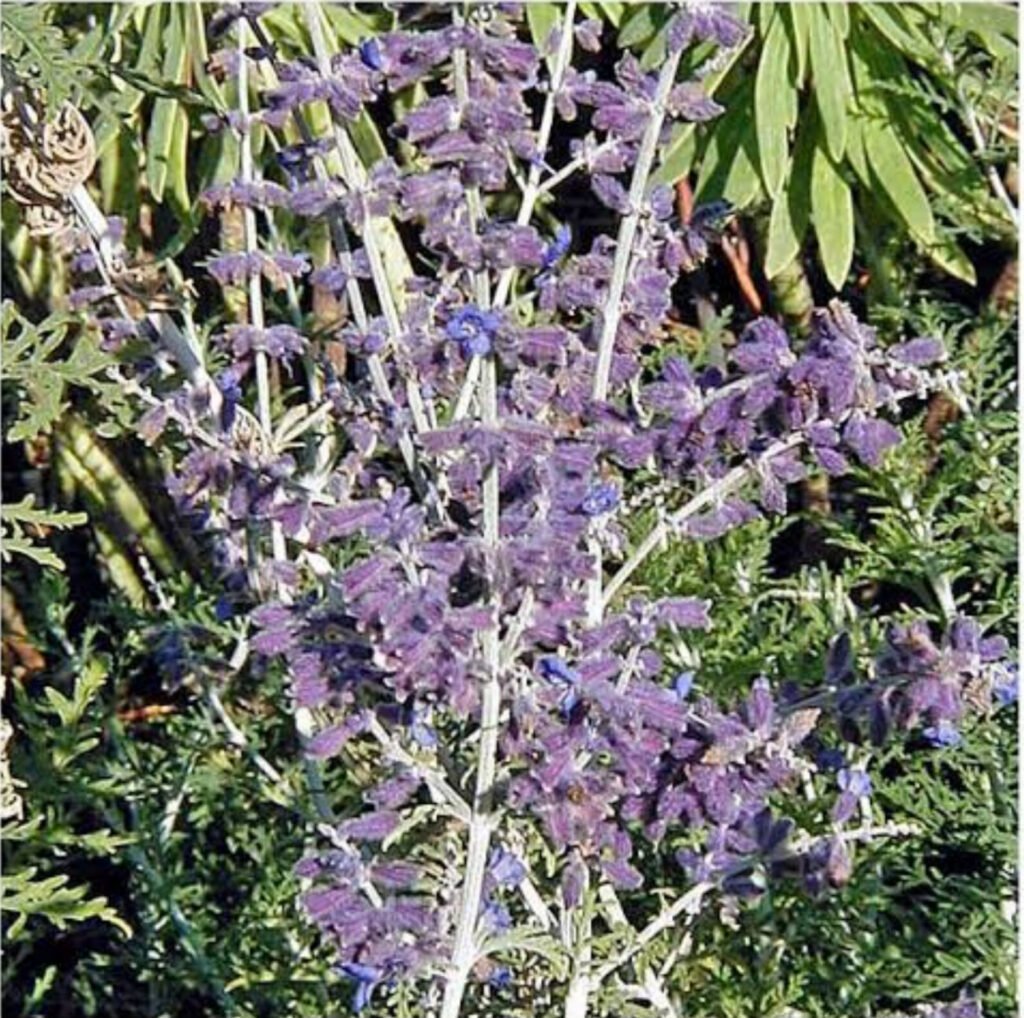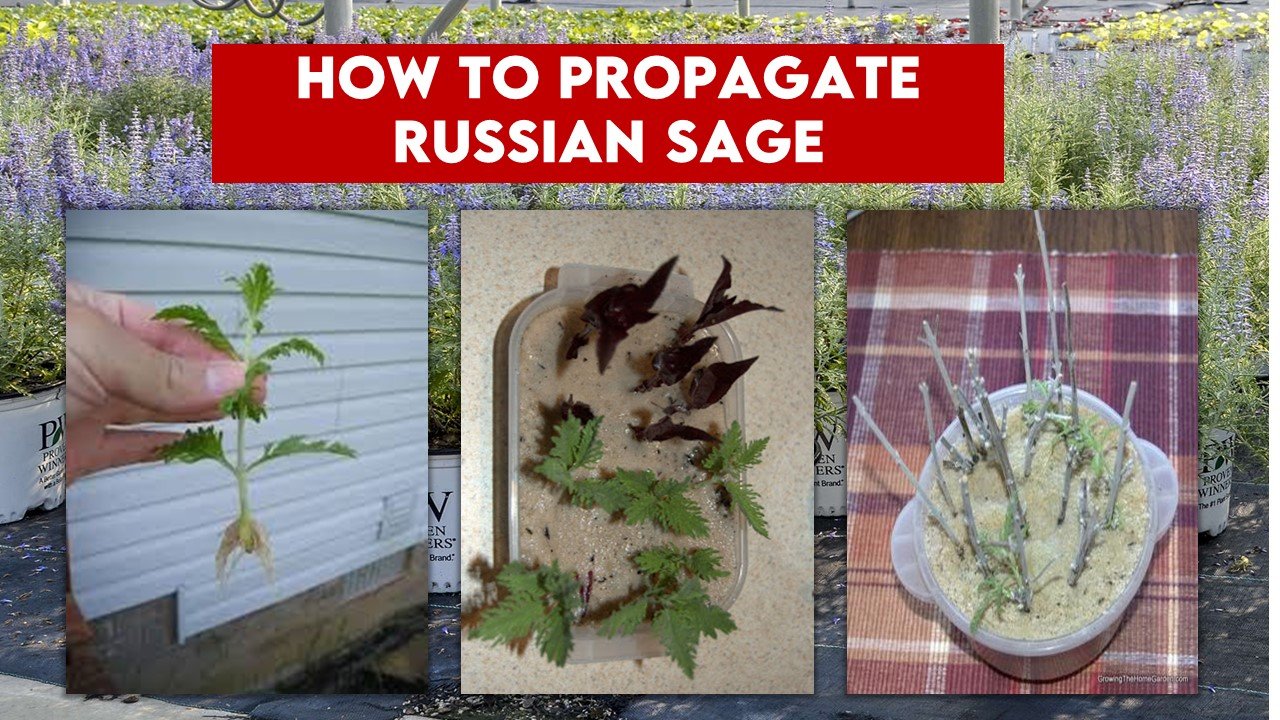How to Propagate Russian Sage: Challenges and Care
The purple-blue flowers of the Russian Sage always pique the scenery and go well with any other flower, it represent power, success and a strong character, but do you know how to propagate Russian Sage?
Russian Sage itself does not originate in Russia nor is it used as a sage, but despite the irony in its name, the plant holds many inescapable aesthetic, aromatic, or medicinal values. In Russia, purple flowers with greyish stems are often offered in graduation ceremonies to express the feeling of achievement and success. It is an excellent plant to grow along with succulents in a rock garden.
Like many other shrubs, Russian Sage could also be used for developing a shrubbery border, and imagining a scented and blooming boundary, doesn’t it make Russian Sage somewhat special, this character will also add mobility to the garden. With its profuse flowering, it could also be used to make a prolonged flowering bed. With a life span of ten years, growing Russian Sage minimizes maintenance costs, the same as in the case of Roses. And once it is propagated in your garden you can also use it to make herbal tea and aromatherapy.
How to propagate Russian Sage: Physical Factors
Though it is easy to propagate Russian sage, one must consider following climatic factors for the healthy growth of the plant.
Sunlight
Russian Sage is a sun-loving plant, it requires about 6-8 hours of direct sunlight each day, so the location must be set in such a way that there is no obstruction for sunlight. Hence, growing it under a tree or inside the house is a bad idea. A south-facing window is the place to grow for indoor propagation.
Soil
A well-drained soil with pH 6. 2-7 is ideal to propagate Russian Sage. The pH can be adjusted in soil with the addition of sulphur or lime. Similarly, drainage in soil can be improved by making a mixture of one part of sand, one part of soil and one part of perlite.
Temperature
Russian sage is a temperate woody shrub, which means it can flourish well in regions with hot and dry summers and chilly winters. A temperature between 5-35°C is most suitable for its blooms.
Water
As Russian sage is drought tolerant once it matures, therefore it requires low irrigation. Waterlogged conditions can kill the plant, so it is advised to irrigate a little only when 2-3 inches of upper soil becomes completely dry. The newly propagated section may need proper irrigation at initial stages, the rate or frequency of irrigation is minimised every other week after propagation.
Pruning in Russian Sage
Pruning in any plant is necessary to prevent greater damage and diseases and promote healthy growth, by removing unnecessary branches just above the two sets of lowest leaves. It also gives symmetry to the plant, hence, increasing its aesthetic value. But it must be done before the new growth in plants emerges. Therefore, it is advised to prune this plant during early spring. For maintenance, cut the dry stems at the end of winter, about 10 cm from the soil, though it is optional. If any stem doesn’t bloom in summer, cut the stem, it will allow new stems to emerge and bloom.
Deadheading in Russian Sage
It is an important practice in flowering plants. Removal of older and dry blooms prevents seed formation in plants and promotes more blooming, which is a requirement of its commercial value. Though it starts blooming in early summer with the right practices it may last up to September with full blooms.
Fertiliser Requirements
When answering how to propagate Russian Sage, never forget on the fertilizer doze recommendations. Though Russian Sage gives a positive response to potassium and phosphorus fertiliser, an excess of nitrogen will lead to more vegetative growth instead of blooms. In most cases there is no need to add fertiliser and not even mulch, to avoid excess moisture, but USDA Zone suggests adding pine needles during winter and removing them during summer.
Methods of Propagating Russian Sage
Root Divison
Division from roots is the easiest and most widely accepted way of propagating the Russian Sage but it must be done in spring or early fall, not at the time of blooming. Now let’s learn the steps to perform the practice. However, dividing the clumps every four to six years reinvigorates the plants and helps to control their spread.
- Step 1: While taking care of the root ball, carefully remove the mature plant.
- Step 2: One by one separate the roots from the ball into sections, keep in mind that the roots and shoots are in fine condition once they are separated.
- Step 3: Now, replant the individual sections at the same depth as the mature plant and water throughout only to settle down the soil.
For initial days keep the soil moist but not flooded and keep the sections in a shady spot, using a plastic bag is a better option as it will create a greenhouse effect for the sections. After two weeks, each section can be used as an individual plant.

Through Softwood Cuttings
It is best to recommend well treated and certified seeds. This method is best to obtain multiple plants at as single time, which could be used in rock garden, or to make hedge or edges.
- Step 1 -Select at least a 6-inch healthy stem and cut just above a node. All cuttings need a connective point, where a new stem emerges, and these points are called notes. To find a node, find the youngest leaf in the plant. Place your fingers next to that leaf, and trace the stem where it connects with another stem, at that point you will find a node.
- Step 2– Dip the cuttings in Rooting hormone, these are auxins like IBA, which is necessary for root as well as shoot initiation. Dipping it for 2-8 weeks is enough if one wants to have quicker results.
- Step 3– Find a suitable pot, with a proper drainage facility. Also, add suitable soil as described above, adjust the pH and bury the two-thirds part of the stem cutting in the soil.
- Step 4– Once the root gets established, put the pot in a shady place. And follow the aftercare water management and fertiliser practices.
By using Seeds
Seeds are not used commercially, but it’s a good option to develop a border or rock garden. In India, Russian Sage is available at @₹150- 200 for 400 seeds.
- Step 1– Buy treated and certified seeds, and a container with good drainage. Starting with a small or medium-sized pot is most suitable.
- Step 2– Prepare the soil as explained in other methods, and dig the soil in it. Water them regularly.
- Step 3– Once the plant starts to emerge, follow the aftercare practices and prune regularly when it matures.

Methods of Propagating Russian Sage
Check for Wiliting
Prolonged dry spells can cause wilting, in that case, irrigate the plant. But if melting occurs in properly irrigated plants that means the drainage in the soil is not working for the plant. And if one finds rotten roots and yellow leaves, it’s better to chop the roots, it could be caused due to waterlogged conditions.
Rootlessness
If prolonged cuttings rootless condition occurs in cuttings, check if the sage is getting proper humidity, sunlight and temperature. Consider the rooting hormone if the rooting is not happening on its own.
Problems in Propagating Russian Sage
The most interesting part of propagating Russian Sage is that there is no severe pest or disease incidence found. But there are only two problems known. First, root rotting due to soggy soil caused by overwatering and second, the stems of Russian sage flop over and seed support during late summer after full bloom. It is not a problem if these are grown in masses, they can hold each other. But if grown in pots it will need stakes for support.
Four Important Varieties suitable for propagating Russian Sage
There are several cultivars of Russian sage which may differ in leaf shape and height. and colour. These are the four varieties of Russian Sage varieties that are famous worldwide.
Blue spire
Blue spire is the most common variety of Russian sage, its fragrant flowers bloom in a dark purple hue. It is a large woody shrub formed by a cross between Perovskia abrotanoides and Perovskia atriplicifolia. It performs better than its predecessors by providing blooms for longer durations. It may grow up to an average height of about three feet.

Filigran
Filigrans have fragile leaves. Its lavender flowers grow upright with stems.

Little spire
As its name suggests, it is a dwarf cultivar of Russian sage.

Blue steel
Blue steel grows blue tubular flowers and is known to grow best with seeds.

Conclusion
Every shrub doesn’t flower for long but thrives in drought conditions. And every flowering plant doesn’t survive in drought or harsh conditions. Russian Sage symbolises many human values, and it may have other uses but its propagation itself is a task.This article covers all the aspects on how to propagate Russian Sage. If you are not sure about propagating it on a large scale, try first with a pot or a small plot. When you feel satisfied with the plant’s growth, come back to this article and find ways to multiply it and decorate your garden with a blue and purple hue.

